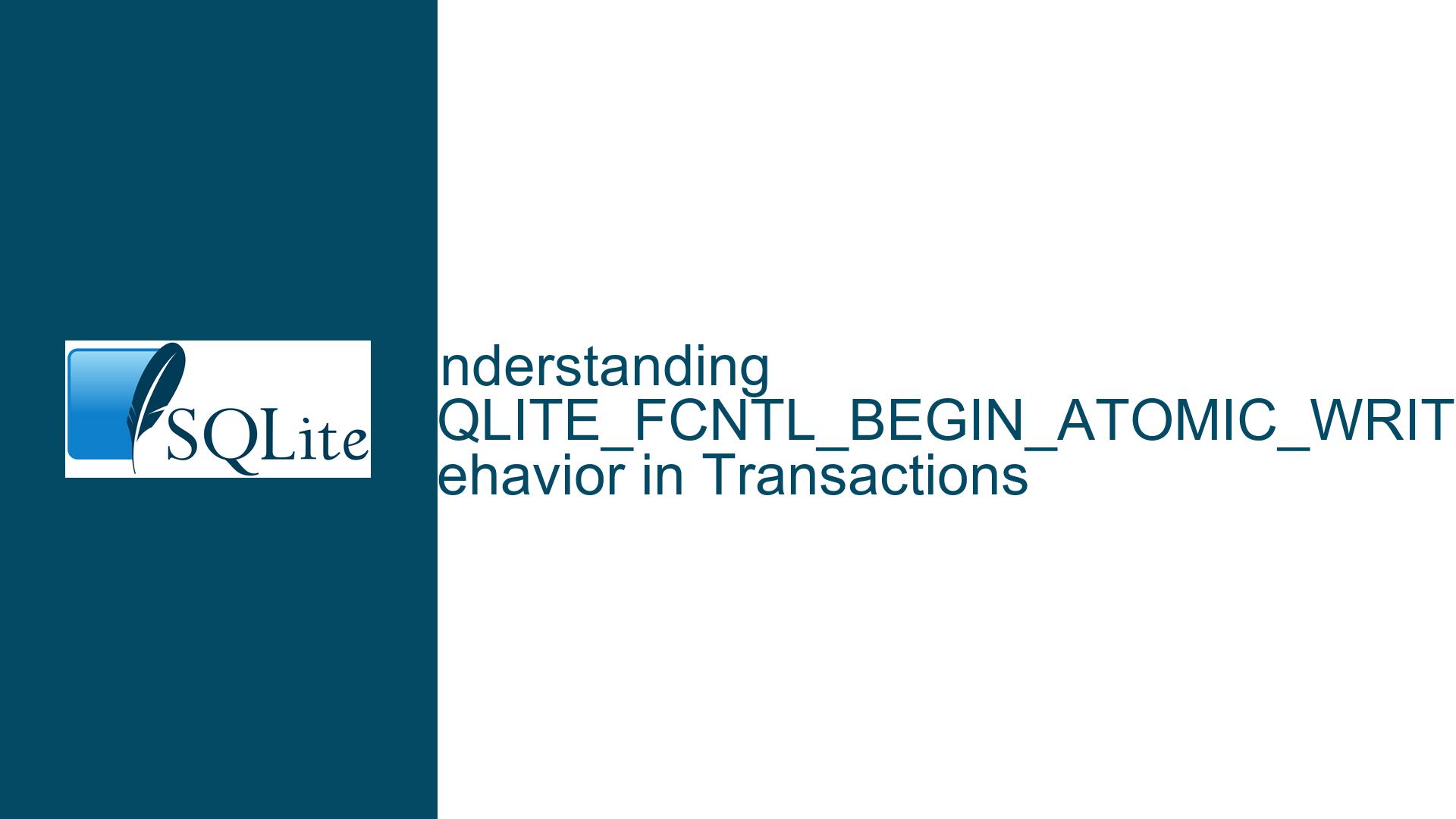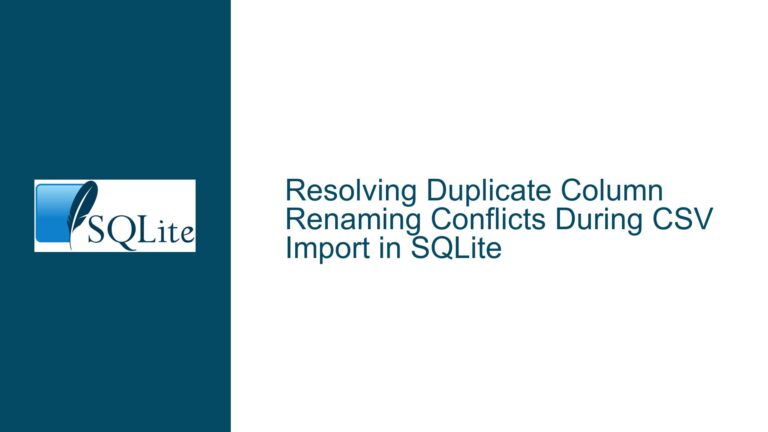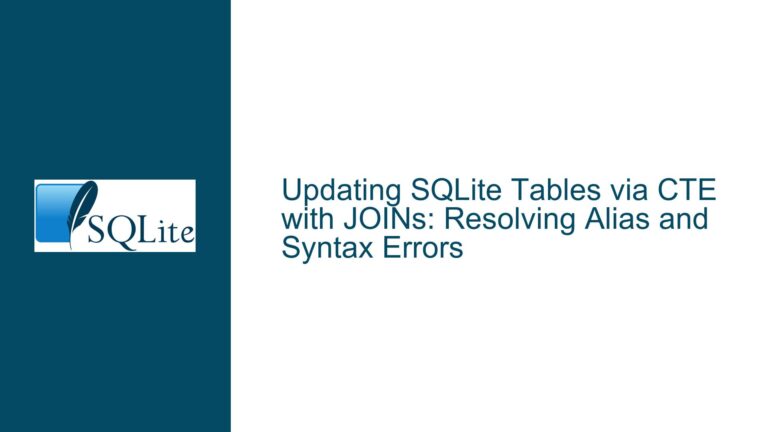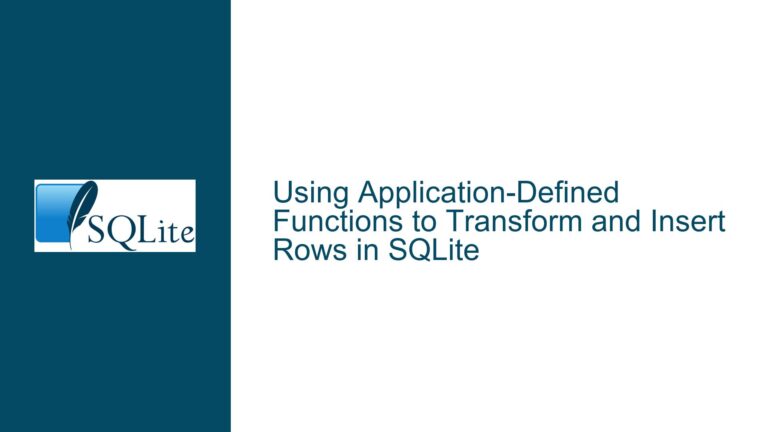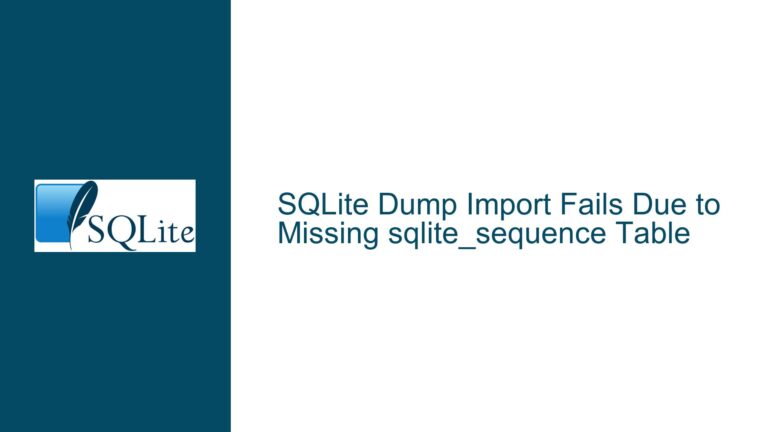SQLITE_FCNTL_BEGIN_ATOMIC_WRITE Behavior in Transactions
SQLITE_FCNTL_BEGIN_ATOMIC_WRITE and Its Role in Transaction Management
SQLite is a lightweight, serverless database engine that provides robust transactional guarantees. One of the key features that enable these guarantees is the ability to perform atomic writes, ensuring that either all changes in a transaction are committed or none are. The SQLITE_FCNTL_BEGIN_ATOMIC_WRITE file control operation is a critical component in this process, particularly when implementing a custom Virtual File System (VFS) that supports batch atomic writes.
The SQLITE_FCNTL_BEGIN_ATOMIC_WRITE operation is used to signal the start of an atomic write batch. When this operation is invoked, the underlying storage system is expected to prepare for a series of writes that should be treated as a single, indivisible unit. This is particularly important in scenarios where the storage medium or the file system layer requires special handling to ensure atomicity, such as in journaling file systems or when working with block devices.
In the context of a transaction, SQLite may issue multiple write operations, and the behavior of SQLITE_FCNTL_BEGIN_ATOMIC_WRITE can vary depending on the specific circumstances. The primary concern is whether this operation is called multiple times within a single transaction, which could have implications for the design and implementation of a custom VFS.
Scenarios Leading to Multiple Calls of SQLITE_FCNTL_BEGIN_ATOMIC_WRITE
The behavior of SQLITE_FCNTL_BEGIN_ATOMIC_WRITE within a transaction is influenced by several factors, including the use of savepoints, nested transactions, and the specific operations being performed. Understanding these scenarios is crucial for correctly implementing a VFS that supports batch atomic writes.
One common scenario where SQLITE_FCNTL_BEGIN_ATOMIC_WRITE might be called multiple times is when savepoints are used within a transaction. Savepoints allow for partial rollbacks within a transaction, and SQLite may issue separate atomic write batches for each savepoint. This ensures that the changes associated with a savepoint can be rolled back independently without affecting the rest of the transaction.
Another scenario involves nested transactions. Although SQLite does not support true nested transactions, it emulates this behavior using savepoints. In such cases, each nested transaction (or savepoint) may trigger a separate call to SQLITE_FCNTL_BEGIN_ATOMIC_WRITE. This allows SQLite to maintain the atomicity of each nested transaction while still ensuring that the overall transaction remains consistent.
Additionally, certain operations within a transaction, such as large inserts or updates, may cause SQLite to split the transaction into multiple atomic write batches. This can happen if the transaction exceeds certain internal limits, such as the maximum size of a write-ahead log (WAL) file or the available memory for caching changes. In such cases, SQLite may issue multiple calls to SQLITE_FCNTL_BEGIN_ATOMIC_WRITE to ensure that each batch is handled atomically.
Ensuring Correct Handling of SQLITE_FCNTL_BEGIN_ATOMIC_WRITE in Custom VFS Implementations
To correctly handle SQLITE_FCNTL_BEGIN_ATOMIC_WRITE in a custom VFS, it is essential to account for the possibility of multiple calls within a single transaction. This requires careful design and implementation to ensure that the VFS can manage multiple atomic write batches without compromising the integrity of the transaction.
One approach is to maintain a state machine within the VFS that tracks the current state of the atomic write batch. When SQLITE_FCNTL_BEGIN_ATOMIC_WRITE is called, the VFS should initialize the state machine and prepare the storage system for an atomic write batch. Subsequent calls to SQLITE_FCNTL_BEGIN_ATOMIC_WRITE should be handled by updating the state machine and ensuring that the previous batch is properly finalized before starting a new one.
Another important consideration is the handling of rollbacks. If a savepoint is rolled back, the VFS must ensure that the corresponding atomic write batch is also rolled back. This requires close coordination between the VFS and SQLite’s transaction management system. The VFS should be able to identify which atomic write batch corresponds to which savepoint and apply the rollback accordingly.
Finally, the VFS must handle the case where a transaction is split into multiple atomic write batches due to size or resource constraints. In such cases, the VFS should ensure that each batch is treated as part of the larger transaction, and that the final commit operation only occurs once all batches have been successfully written. This may involve buffering changes in memory or using temporary storage until the entire transaction is complete.
In conclusion, while SQLITE_FCNTL_BEGIN_ATOMIC_WRITE is typically called once per transaction, there are scenarios where it may be called multiple times. A well-designed custom VFS must account for these scenarios to ensure that atomicity is maintained across all operations within a transaction. By understanding the nuances of SQLite’s transaction management and implementing robust handling mechanisms, developers can create VFS implementations that fully leverage the power of batch atomic writes.
